|
|
||||||||||||||||||||
Vladimir Komarov's tragic flight aboard Soyuz-1 On April 23, 1967, after a more than a two-year gap in human space flight, the Soviet Union announced the launch of a new-generation spacecraft called Soyuz-1 ("union") with veteran cosmonaut Vladimir Komarov onboard. Customary for the secretive Soviet space program, the official report contained generalized statements about testing of a new spaceship but no details on its design or its mission. However, the next day, the USSR followed up with the announcement that Komarov had tragically died on landing due to a failure of the parachute system.
Soyuz-1 (7K-OK No. 4) mission at a glance:
|
 |
|||||||||||||||||||
| PREPARING SOYUZ-1 MISSION | ||||||||||||||||||||
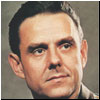 |
Unmanned launches of the Soyuz spacecraft, which preceded Komarov's flight, exposed numerous flaws. Cautious engineering thinking dictated another "clean" unmanned launch, before Soyuz could be certified to carry people. However, the Soyuz developers were under pressure from their political bosses to have a "space spectacular" as soon as possible. |
|||||||||||||||||||
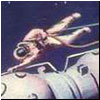 |
From the outset, the primary goal of the Soyuz 7K-OK project was the rehearsal of rendezvous in space in support of the L1 and L3 lunar exploration programs. To meet this goal, early missions of the Soyuz spacecraft always included a dual flight. |
|||||||||||||||||||
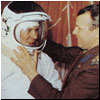 |
Training crews for the first Soyuz mission By early September 1965, preparations for the first Soyuz mission began, just a month after Sergei Korolev had signed the final technical specifications for the Soyuz 7K-OK spacecraft. By that time, Korolev had already received a letter from the Head of Cosmonaut Training Center Nikolai Kamanin with a list of candidates for the first joint mission. |
|||||||||||||||||||
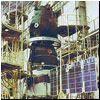 |
While engineers feverishly worked to complete preparations for the launch of the first Soyuz, official and cosmonauts still debated the exact details of the ambitious flight plan. |
|||||||||||||||||||
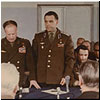 |
Final decision to launch Soyuz-1 On April 20, preparations of the first Soyuz mission reached the point of no return with crews officially confirmed and the hardware undergoing final checks. |
|||||||||||||||||||
| FLIGHT OF SOYUZ-1 | ||||||||||||||||||||
PLEASE SUPPORT THIS PROJECT! |
||||||||||||||||||||
Soyuz-1 begins its fateful flight The 7K-OK No. 4 spacecraft lifted off from Tyuratam's Site 1 on April 23, 1967, at 03:35 Moscow Time, exactly as scheduled. Upon reaching orbit, it was publicly announced as Soyuz-1. Observers noticed that unlike Vostok and Voskhod, the very first spacecraft in the series had been given a number -- another hint that a second launch was imminent. |
||||||||||||||||||||
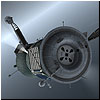 |
Soyuz-1 attempts to return to Earth Despite numerous challenges, Vladimir Komarov with the help of engineers on the ground, was able to overcome all the technical problems in orbit and successfully piloted his spacecraft on a path back to Earth in the early hours of April 24, 1967. |
|||||||||||||||||||
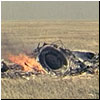 |
Vladimir Komarov dies on landing The landing of the Soyuz-1 spacecraft on April 24, 1967, appeared to be normal until search and rescue teams reached the touchdown site. To their horror, they found the capsule crashed and engulfed in flames. It was immediately clear that the cosmonaut had never had a chance. |
|||||||||||||||||||
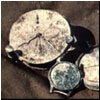 |
Investigation into the Soyuz-1 accident The investigation into the Soyuz-1 accident established that the crash of the descent module resulted from a parachute failure. However the exact culprit in the parachute malfunction has remained under question for decades. |
|||||||||||||||||||